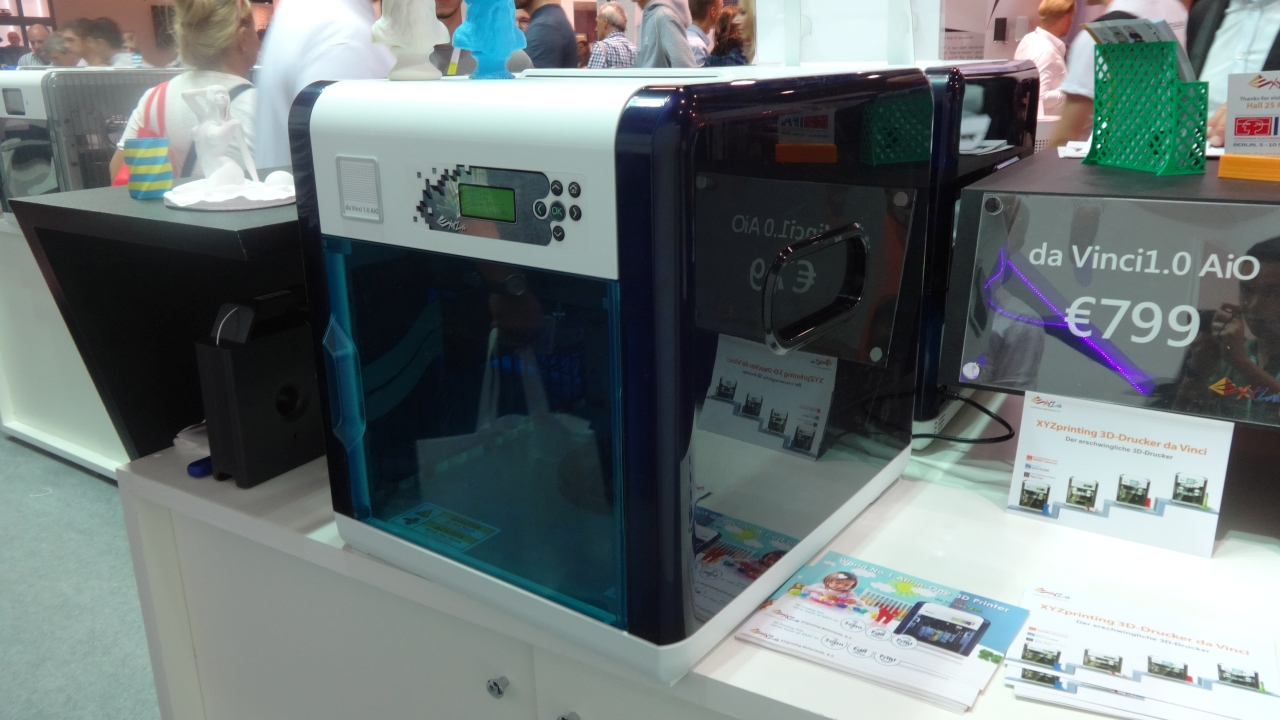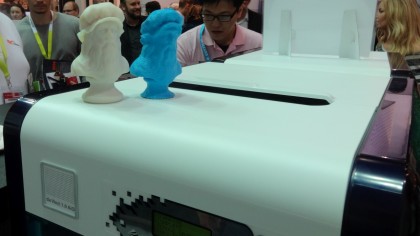Meet the company that wants to sell you a sub-£200 3D printer in 2015
Kinpo Group is world's biggest calculator maker

Remember when the first inkjet printers hit the market? They were expensive, slow, bulky, had a low resolution and could only print in black.
3D printing is currently at this stage now, and given how quickly prices have been falling over the past two years as the technology has matured, it won't be long before it goes mainstream.
TechRadar Pro met with XYZ Printing's senior manager for Market Development, Gary Shu, at IFA 2014 to discuss about the state of 3D printing and to witness one of the first affordable 3D all-in-one in action.
XYZ Printing is a brand that was launched by the Kinpo Group - not a household name by any measure. The Taiwanese industrial conglomerate is a powerhouse that delivers products, as an ODM, for the likes of Asus, Dell, Lenovo, HP, LG, Samsung, Sony, Seagate and Verbatim.
Shu estimates that 80% of calculators and half of the printers worldwide are manufactured by Kinpo and at any one time, a million printers (yes, a million) are awaiting shipment from Kinpo's factories (there are 60 across the world).
More than just rhetorics
The company generates more than $30 billion in revenue (around £19 billion, AU$34 billion) and has more than 8,500 engineers spread across four continents. It has 15 years' experience in printing and probably has one of the most comprehensive print-related knowledgebase globally.
It is the 800-lbs Silverback gorilla of 3D printing and its products are, unsurprisingly, light years away from some DIY 3D printing kits available on the market in terms of finish and ease of use.
Are you a pro? Subscribe to our newsletter
Sign up to the TechRadar Pro newsletter to get all the top news, opinion, features and guidance your business needs to succeed!
The Da VInci 1.0 retails for under £500 (below $500 in the US, about AU$ 600) while the all-in-one model sells for €799.

Cheaper alternatives like the MOD-t are coming but they are months away from shipping and do not offer the same industrial, sturdy finish as the Da Vinci line.
Shu reckons that the consumer 3D printing market is still an immature one. He reveals that even XYZ Printing will bringing even cheaper models, possibly down to $299, although nothing has been determined yet. As for most maturing production lines, more expensive models delivering additional features will also be added over time to cater for evolving user needs.
The evolution of 3D printing
Where will 3D printing progress? It is likely to follow the same path as inkjet printers; cheaper, faster, more precision and more colourful. Da Vinci's models are as good as it gets with out-of-the-box operation, simple maintenance and levelling.
Shu however says it is not good enough and envisions a time when 3D printing will be as seamless as 2D printing. That will mean possibly moving away from the current fused filament fabrication technology towards more accurate but more expensive ones like SLA (Stereolithography). The day when printing an infinite number of colours however is still distant but change is coming for sure.
And unlike research analyst firm Gartner, Shu predicts that consumer 3D printing will become mainstream within two or three years rather than five. XYZ Printing is likely to play a big part in that drive as it seeks to emulate the likes of HTC and Lenovo and shifts from making printers for others, to making printers with their own names on it.
"We only have a couple of years before major brands take over", he candidly acknowledged. For now, Kimpo is committed to personal 3D printing desktop printers and will leverage its massive market presence to make it happen.
The Apple of 3D printing
Like Apple and the iPhone, XYZ Printing controls the entire end-to-end supply chain allowing it to tweak minute details like the finish and the time-to-market as well as squeeze. That allowed XYZ Printing to deliver a whole portfolio in less than a year with more to come.
Its latest model, the Da Vinci 1.0 AIO, packs what it calls the "most precise consumer-grade 3D scanning system" in the market one that can capture an object in less than five minutes. At under £650 (about $1000, AU$1133), it paves the way for the first true autonomous, self-replicating 3D printer.
Shu also elaborated on the four business models on which the 3D printer ecosystem will thrive: service driven (service points generate half of the global revenues of the 3D market), content (e.g. selling 3D plans), the printer itself and the consumables.

Désiré has been musing and writing about technology during a career spanning four decades. He dabbled in website builders and web hosting when DHTML and frames were in vogue and started narrating about the impact of technology on society just before the start of the Y2K hysteria at the turn of the last millennium.